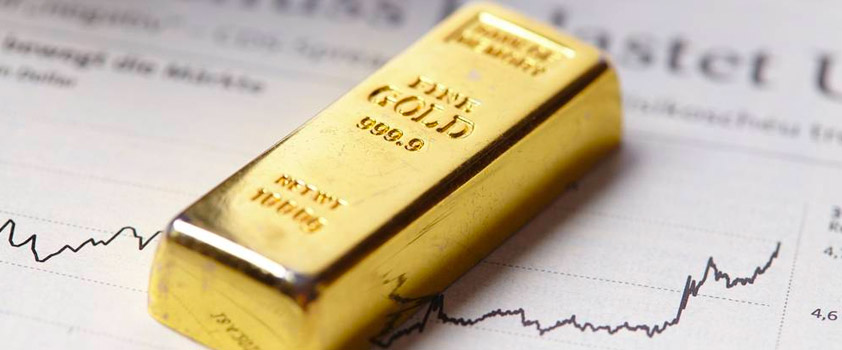
Eden
Oct 25, 2021 14:07

What is a safe-haven currency
Safe-haven currency is also called hedging currency, which means that it is not susceptible to politics, wars, market fluctuations and other factors and can avoid the above-mentioned risks to the greatest extent. It is a relatively stable currency that is not easy to depreciate.
Why has the yen become a safe-haven currency?
Japan has been in a current account surplus for the past 25 years and is also the world's largest creditor country. Although the Japanese government’s financial deficit is high, Japan’s interest rates have been extremely low for a long time, and investors all over the world prefer to borrow Japanese Yen in exchange for investment in other currencies. When international risks increased, major assets were sold in panic, and most of the investments that were released were exchanged for Japanese Yen to repay debts, which caused the Yen to rise in a short period of time. In addition, from a geographical point of view, the yen is relatively independent of the US dollar and the euro zone, making the yen a diversification option for hedging risks in the European and American regions.
In the past, the yen tended to appreciate when global financial risks exploded. The yen is often referred to as a safe-haven currency in analysis reports.
According to the IMF report, since the mid-1990s, the yen has risen by more than 6% in a quarter for 12 periods. During these periods, high-risk events occurred outside of Japan. (Such as the Asian financial crisis in 1998, the Lehman incident in 2008, etc.). Interpretation of this record, the yen is indeed a safe-haven currency. E.g:
In May 2010, the euro zone debt crisis pushed the yen to rise more than 10% against the euro in just a few weeks.
On February 25, 2013, affected by the uncertainty of the results of the Italian election, the euro/yen fell more than 5% that day, from 125 all the way down to 118.7 (the yen also rose sharply against the US dollar on the same day).
Its progress in recent years can be divided into three periods:
2012~2015 Abenomics
Abenomics, which has been launched since 2012, focuses on the three major directions of "easy monetary policy", "expansionary fiscal policy", and "economic structural reform". In the foreign exchange market, Japan’s monetary easing policy did work for a short time. The depreciation of the Japanese currency led to the rise of Japanese stocks. The annual return of the Nikkei Average Index (NIKKEI 225) reached 7.12% in 2014 and 9.07% in 2015.
In April 2014, the Japanese government raised the consumption tax to 8% to actively stimulate short-term consumption. The inflation rate briefly exceeded 3% in May 2014, reaching the highest point in a decade. However, at the beginning of 2016, the inflation rate fell back to negative value again. Despite the implementation of quantitative easing, Japan called on consumers to purchase real assets, and called on companies to increase investment or raise wages, but the effect is still limited.
2016: Market uncertainty causes the yen to appreciate
In 2016, many unexpected events that made investors panic occurred in the capital market, including expectations of the Federal Reserve’s interest rate hike, Brexit in June, and the US presidential election in November. These panic events have led to the appreciation of safe-haven assets such as gold, Japanese yen, and national debt. The appreciation of the yen is detrimental to large export-oriented companies, causing Japanese stocks to fall.
Like the Swiss franc, the Japanese yen has become a safe-haven currency because they are international currencies, so their currencies play an important role in global commodity transactions. In addition, the US dollar and the euro zone have debt problems, and they may print money (QE) to save themselves and cause currency depreciation.
The strange phenomenon of the safe-haven yen
In theory, when international risks increase, the market will exchange funds for yen (safe-haven currency). However, according to the bank payment report, when global financial risks exploded, there was no substantial net capital inflow in Japan. The phenomenon of currency appreciation without capital inflow is very rare in foreign exchange.
The speculation is that the reason why the yen is regarded as a safe-haven currency is mainly used for "arbitrage trading", that is, the yen is "used to hedge". Since the Japanese yen and the US dollar are currencies with almost zero interest rates, investors often borrow the low-cost Japanese yen and switch to other high-yield currency assets to make the difference. This is called arbitrage trading. The rapid expansion of arbitrage trading in recent years is also one of the reasons for the rise of the yen.
When market risk aversion is high, speculators often take the initiative or are forced to liquidate arbitrage transactions. For example, selling related currencies, buying U.S. dollars and Japanese yen to repay borrowings, resulting in an increase in the exchange rate of U.S. dollars and Japanese yen. Among them, yen arbitrage has a longer history and a larger scale. Therefore, the yen exchange rate tends to rise more often.
Investors buy Japanese yen to avoid market risks and passively close their positions. Over time, when enough traders in the market do nothing, it becomes a self-formed prophecy. As Soros explained this phenomenon: the market itself has a self-fulfilling function. Or it can be regarded purely as a psychological constraint of foreign exchange traders.
Read more:
The European blockade continues. How long can the strong euro last?
https://www.top1markets.com/en/news/Europes-lockdown-continues-How-long-can-the-strong-EUR-last
Crazy printing of 1.9 trillion yuan, everything is skyrocketing, what should investors do?
https://www.top1markets.com/zh/news/Bidens-19-trillion-be-a-boon-or-bubble-for-investor
What about the pound and euro after Brexit? Will players still lose their jobs after Brexit? https://www.top1markets.com/zh/news/553803

Oct 25, 2021 14:07

Oct 25, 2021 14:07